#pollinatorgarden
Text
Cultivating Ecosystem Harmony: The Best Flowers to Plant for Insects and the Environment
Shaina Tranquilino
April 6, 2024

In a world where biodiversity is increasingly threatened, every little action to support our ecosystems counts. One powerful way to make a positive impact is by planting flowers that not only beautify our surroundings but also serve as vital resources for insects and other creatures. As we delve into the realm of gardening, let's explore some of the best flowers to plant to foster a thriving ecosystem.
Understanding the Importance of Planting for Insects
Insects play a crucial role in maintaining ecological balance. They pollinate plants, decompose organic matter, and serve as a vital food source for various animals. However, habitat loss and pesticide use have led to a decline in insect populations worldwide. By choosing the right flowers for our gardens, we can provide essential resources for these beneficial insects, helping to sustain their populations and support overall biodiversity.
Top Flowers for Supporting Insects and the Environment
Lavender: Loved for its fragrant blooms and drought tolerance, lavender is a favourite among gardeners and insects alike. Bees are particularly drawn to its nectar-rich flowers, making it a valuable plant for pollinator gardens. Additionally, its aromatic foliage repels pests like mosquitoes and moths.
Sunflowers: With their towering stems and vibrant blooms, sunflowers are not only a sight to behold but also a magnet for pollinators. Bees, butterflies, and even birds flock to these cheerful flowers to collect nectar and seeds. Opt for native varieties to provide the most benefit to local wildlife.
Wild Bergamot (Bee Balm): As the name suggests, bee balm is a bee favourite, attracting a variety of pollinators with its colourful blooms. This native perennial not only adds beauty to the garden but also provides a valuable food source for bees and butterflies throughout the summer months.
Goldenrod: Often unfairly blamed for causing allergies (it's actually ragweed that's the culprit), goldenrod is a powerhouse of nectar for bees, butterflies, and other pollinators. Its bright yellow flowers light up the late summer and early fall landscape while supporting diverse insect populations.
Echinacea (Coneflowers): Coneflowers, with their distinctive spiky centers and daisy-like petals, are not only visually striking but also highly attractive to bees and butterflies. Their sturdy stems and long-lasting blooms make them a low-maintenance addition to any garden.
Milkweed: No list of insect-friendly flowers would be complete without milkweed. As the sole host plant for monarch butterfly larvae, milkweed is essential for supporting declining monarch populations. Planting milkweed provides a critical habitat for monarchs to lay their eggs and nourishes caterpillars as they undergo metamorphosis.
Yarrow: Yarrow's flat-topped clusters of tiny flowers are a favourite among pollinators, including bees, butterflies, and beneficial wasps. This drought-tolerant perennial is easy to grow and adds a delicate beauty to gardens while supporting local insect populations.
Tips for Creating an Insect-Friendly Garden
Choose Native Plants: Native plants are adapted to the local environment and provide the best resources for native insects. Research native species in your area and incorporate them into your garden.
Plant a Variety of Flowers: Different insects have different preferences, so aim for a diverse selection of flowers that bloom at different times throughout the growing season. This ensures a steady supply of nectar and pollen for pollinators.
Avoid Pesticides: Pesticides can harm beneficial insects along with pests. Instead of relying on chemicals, practice natural pest control methods and encourage a healthy balance of predators and prey in your garden.
Provide Shelter and Water: In addition to flowers, consider including other elements in your garden, such as shrubs, trees, and water features, to provide shelter, nesting sites, and sources of hydration for insects.
By planting flowers that support insects and the environment, we can contribute to the conservation of biodiversity and create havens of beauty and life in our own backyards. Whether you have a sprawling garden or a small balcony, every patch of green can make a difference in nurturing our precious ecosystems. Let's cultivate harmony with nature, one flower at a time.
#EcoFriendlyGardening#BiodiversityConservation#PollinatorGarden#InsectFriendlyFlowers#NativePlanting#GardenForWildlife#SaveTheBees#ButterflyHabitat#SustainableGardening#PlantForThePlanet#WildlifeHabitat#NaturalPestControl#GrowNative#GreenThumb#FlowerPower#GardenForNature#SupportLocalWildlife#HarmonyWithNature#BackyardHabitat#FlowersForInsects#GardeningTips#EcosystemSupport#InsectSanctuary#Flowers#ConservationGardening#BeesLoveFlowers#Flower#Plants#Garden
2 notes
·
View notes
Photo

We have a birdbath that the bees drink out of every day. Up to 50 bees at any one time. #beecare #bees🐝 #beehappy #naturelovers #pollinators🐝 #pollinatorgarden #tucsonarizona #desertlife (at Catalina Foothills, Arizona) https://www.instagram.com/p/CfPNZnQpgJhXiaM5qzo1MUjmRAIniF3opVN_gE0/?igshid=NGJjMDIxMWI=
25 notes
·
View notes
Photo

The beautiful Hebe ‘Conquest’ coming into #flower in the #iPlantsgarden. Big #flowers! #Hebe #Hebesoc #plants #Veronica #Shrubs #gardens #evergreenshrub #perth #scotland #gardening #pollinatorplants #pollinatorgarden #pollinator #bees #butterflies #beneficialinsects (at Perth, Perth and Kinross) https://www.instagram.com/p/CgMW7a2q38I/?igshid=NGJjMDIxMWI=
#flower#iplantsgarden#flowers#hebe#hebesoc#plants#veronica#shrubs#gardens#evergreenshrub#perth#scotland#gardening#pollinatorplants#pollinatorgarden#pollinator#bees#butterflies#beneficialinsects
5 notes
·
View notes
Photo

The bees are buzzing over this grouping of Allium Millenium in Chevy Chase, Md. #gardendc #dmv #flowersonfriday #flowerfriday #pollinators🐝 #pollinatorgarden #allium #alliummillenium #alliumflowers #picoftheday #nofilter (at Chevy Chase, Maryland) https://www.instagram.com/p/CiASU1lOXuC/?igshid=NGJjMDIxMWI=
#gardendc#dmv#flowersonfriday#flowerfriday#pollinators🐝#pollinatorgarden#allium#alliummillenium#alliumflowers#picoftheday#nofilter
2 notes
·
View notes
Photo
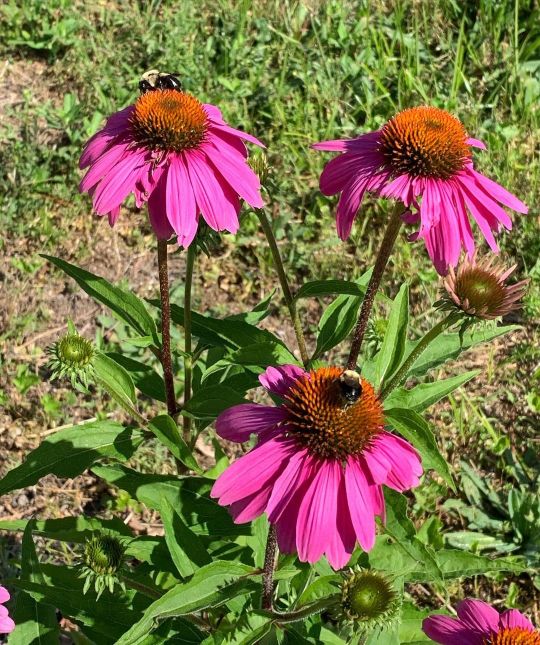
Our echinacea (coneflower) is buzzing today! I love this plant. Not only is it lovely to look at but bees and birds love it. I dry leaves and flowers for tea, leave dead seed heads standing to feed goldfinches all fall and winter. I planted one plant about five years back and have seeded or transplanted to other spots. Great addition to any pollinator or flower or herb garden. #capecodgarden #coneflower #echinacea #flower #herb #pollinatorgarden #feedthepollinators #bees #happybees #nature #getoutside https://www.instagram.com/p/Cf4ErlWub-P/?igshid=NGJjMDIxMWI=
#capecodgarden#coneflower#echinacea#flower#herb#pollinatorgarden#feedthepollinators#bees#happybees#nature#getoutside
2 notes
·
View notes
Photo

Señora life…👩🏻🌾 #HappyGardening #OrganicGrower #pollinatorgarden #summersolstice https://www.instagram.com/p/CfIHoMfsNM-/?igshid=NGJjMDIxMWI=
5 notes
·
View notes
Text
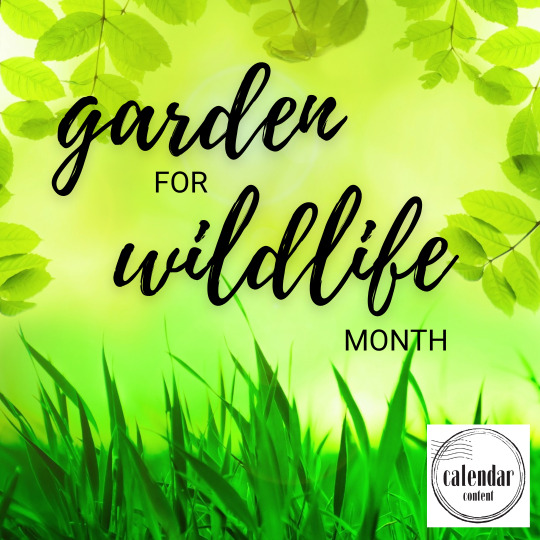
May is garden for wildlife month. Consider utilizing plants that are native to your location. This can help to encourage wildlife to pollinate, eat, rest, or nest in your garden!
#teenhelporg#teenhelpcalendar#teenhelp#gardenforwildlife#garden#wildlife#pollinatorgarden#pollinatorfriendly
1 note
·
View note
Text


Lamp Flower 🍬
1 note
·
View note
Photo

Stokes Aster in all her glory. #ocalafoodforest #floridanativeplants #pollinatorgarden #purpleflowers #naturesbeauty https://www.instagram.com/p/CpDA64fOTHy/?igshid=NGJjMDIxMWI=
0 notes
Photo
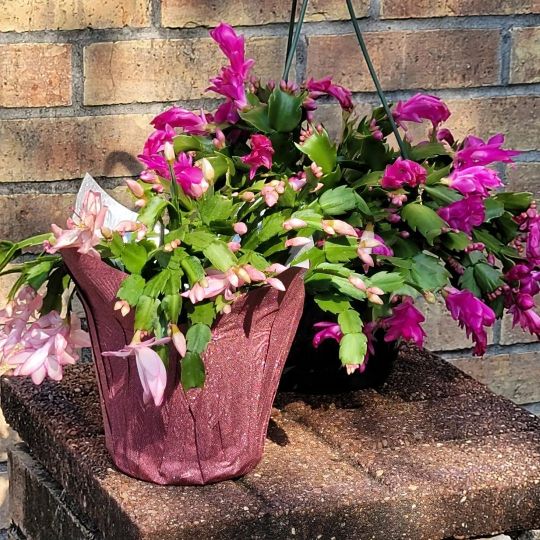
If one is good, then two are better. #writerswhogarden #christmas #pollinatorfriendly #pollinators🐝 #pollinators #pollinatorgarden https://www.instagram.com/p/Cl6zjPIug7h/?igshid=NGJjMDIxMWI=
0 notes
Photo

Fall is not all about reds, yellows, and orange. #aster #NewEnglandAster #PlantNative #pollinatorgarden #VermontByVermonters (at Birds of Vermont Museum) https://www.instagram.com/p/CiqenjMPtlF/?igshid=NGJjMDIxMWI=
0 notes
Photo
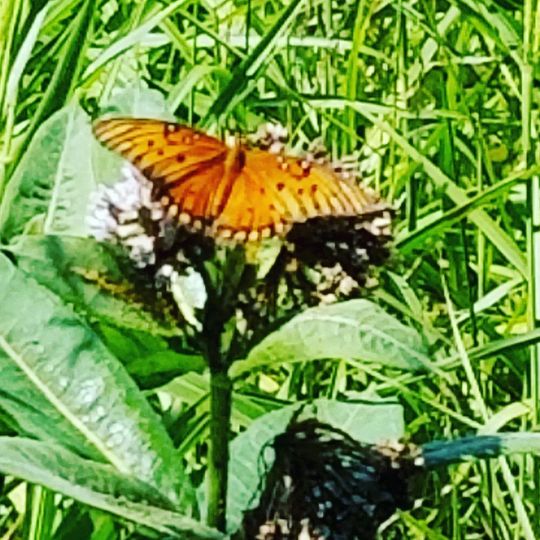
Hello, fruitilary #butterflies #pollinatorgarden #walking #wildmagic #woodsandwater https://www.instagram.com/p/ChlXrwar7aS/?igshid=NGJjMDIxMWI=
0 notes
Photo
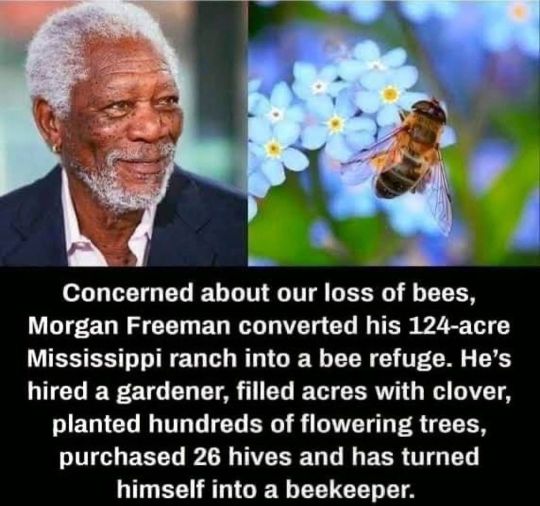
Thank you, Morgan! 🐝 🐝 🐝 #beekeeping #enviromentalist #beeconservation #beerlover #pollinatorgarden #pollinators🐝 #naturelover (at Catalina Foothills, Arizona) https://www.instagram.com/p/Ce35q9iJjwhJGpaLYMS7IF52siRJC1oGHUKVLU0/?igshid=NGJjMDIxMWI=
2 notes
·
View notes
Text
The Monarch Butterflies Need Your Help
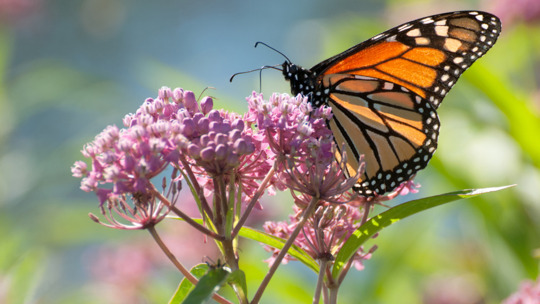
Monarch butterflies are the most recognizable and beloved butterflies in North and Central America. Millions of monarchs migrate across the United States; spending their summers in Michigan and winters in Mexico. Despite the small size of monarch butterflies and other insects, they play a very large role in human lives. Insects travel to flowering plants, drinking nectar, and transporting pollen. This results in a pollination service that is responsible for 1/3 of the world's food source.
Due to a loss of habitat, the eastern Monarch population has declined by 90%. Other pollinators are experiencing a decline as well. Bees, which pollinate one third of the world's food crops, have declined 50% in recent decades. However, these alarming declines have sparked conservation programs across the nation to take action. Efforts to protect pollinators and restore habitat have been rewarded with a steady increase in monarch populations over the last few years.
In 2014, President Obama announced the first comprehensive pollinator program ever created in the federal government. The Presidential Memorandum was a collaborative effort between organizations, agencies, and federal departments to raise awareness and provide assistance to pollinators.
Pollinator health begins with you. Join us in celebrating monarchs, bees, and all other pollinators by becoming aware and participating in the tremendous ongoing conservation efforts!
How You Can Help
There are many different ways for YOU to help monarchs and other important pollinators in Michigan!
Report your monarch sightings throughJourney North and Monarch Joint Venture.
Report your bee sightings through the Bee spotter and Bumble Bee Watch.
Learn how to help and stay up to date with the latest pollinator information - Michigan State University Extension
Learn about creating monarch habitat and planting native milkweed - Monarch Joint Venture
Six ways to save monarchs - National Wildlife Federation Blog
Citizen science: opportunities to study monarchs - Monarch Joint Venture
Make a donation to the Nongame Wildlife Fund
Michigan Pollinator Gardening Tips
Michigan Pollinator Gardening Tips (Accessible)
Kids and Teachers
Learn more about monarchs and other important pollinators with these activities and resources:
Learn how to help and stay up to date with the latest pollinator information - Michigan State University Extension
Teaching about the Magnificent Monarch - Association of Fish and Wildlife Agencies
Learn about creating monarch habitat and planting native milkweed - Monarch Joint Venture
Citizen science: opportunities to study monarchs - Monarch Joint Venture
School Yard Habitats program through National Wildlife Federation
Monarch Butterfly Info
Learn more about the monarch butterfly with the following resources:
Monarch Conservation - Xerces Society
Monarch Watch
Insects & Pollinators - US Department of Agriculture
Save the Monarch Butterfly - US Fish & Wildlife Service
Monarch Joint Venture resources
Monarch Butterfly Conservation Webinar Series - US Fish & Wildlife Service
Bee - Informed
Did you know globally there are more than 20,000 species of bees and nearly 3,500 species within the United States? Check out the links below for more about bees!
Bumble Bee Conservation - Xerces Society
Reversing Pollinator Decline is Key to Feeding the Future - US Department of Agriculture Blog
Bumble Bee Watch
Rusty Patched Bumble Bee: proposed listing as an endangered species - US Fish & Wildlife Service
Conservation Projects
What's the buzz? Learn all about current projects helping pollinators.
Pollinator Partnership
Monarch Joint Venture Projects
Michigan's Managed Pollinator Protection Plan
Protecting pollinators with cooperative action - Michigan Farm News
Michigan Monarch Strategy
Source: https://www.michigan.gov/dnr/education/michigan-species/insects/monarch
#environmental education#protectourplanet#environmentaleducation#pollinatorgarden#pollinators#pollination#monarchwaystation#monarch butterfly#milkweed#monarch caterpillar#monarchmichigan#monarchwatch#climatechange
0 notes
Photo

Happy #flowerfriday from this happy bee on a salvia at @meadowlarkbotanicalgardens in #vienna #va. #gardendc #dmv #salvia #publicgarden #pollinators🐝 #pollinatorgarden #picoftheday #nofilter (at Meadowlark Gardens Regional Park) https://www.instagram.com/p/CjIycQaOiEL/?igshid=NGJjMDIxMWI=
#flowerfriday#vienna#va#gardendc#dmv#salvia#publicgarden#pollinators🐝#pollinatorgarden#picoftheday#nofilter
0 notes
Photo

It’s always a good day for a butterfly pic. #easterntigerswallowtail #swallowtail #butterfly #summer #pollinator #pollinatorgarden #nature #getoutside https://www.instagram.com/p/Ch2o5FpOwdX/?igshid=NGJjMDIxMWI=
0 notes